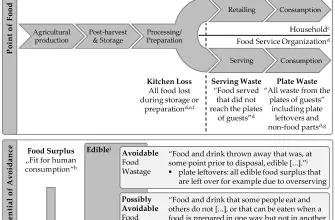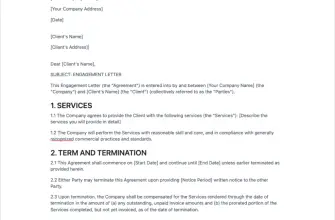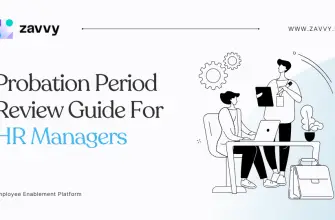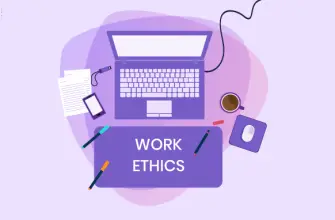“Empower your workplace with knowledge and inclusivity through our comprehensive guide on protected characteristics.”
Understanding Protected Characteristics at Work: A Comprehensive Guide to Promoting Equality and Diversity in the Workplace is a resource that provides information on the protected characteristics outlined in the Equality Act 2010. This guide aims to help employers and employees understand their legal obligations and responsibilities in promoting equality and diversity in the workplace. It covers topics such as discrimination, harassment, and victimization, and provides practical advice on how to create an inclusive and welcoming work environment for all individuals.
What are Protected Characteristics?
In today’s society, promoting equality and diversity in the workplace is more important than ever. It is essential that employers understand the concept of protected characteristics and how they can impact their employees. Protected characteristics are personal attributes that are protected by law, and employers must ensure that they do not discriminate against employees or job applicants based on these characteristics.
There are nine protected characteristics under the Equality Act 2010. These include age, disability, gender reassignment, marriage and civil partnership, pregnancy and maternity, race, religion or belief, sex, and sexual orientation. It is important to note that discrimination can occur in various forms, including direct discrimination, indirect discrimination, harassment, and victimization.
Age is a protected characteristic that refers to individuals of all ages. Employers must ensure that they do not discriminate against employees or job applicants based on their age. This includes not making assumptions about an individual’s abilities or skills based on their age.
Disability is another protected characteristic that refers to individuals with physical or mental impairments that have a substantial and long-term adverse effect on their ability to carry out normal day-to-day activities. Employers must make reasonable adjustments to ensure that employees with disabilities are not at a disadvantage in the workplace.
Gender reassignment refers to individuals who are undergoing or have undergone a process of gender reassignment. Employers must ensure that they do not discriminate against these individuals and provide them with the same opportunities as other employees.
Marriage and civil partnership are protected characteristics that refer to individuals who are married or in a civil partnership. Employers must ensure that they do not discriminate against these individuals and provide them with the same opportunities as other employees.
Pregnancy and maternity are protected characteristics that refer to individuals who are pregnant or on maternity leave. Employers must ensure that they do not discriminate against these individuals and provide them with the same opportunities as other employees.
Race is a protected characteristic that refers to individuals who belong to a particular racial group. Employers must ensure that they do not discriminate against these individuals and provide them with the same opportunities as other employees.
Religion or belief is a protected characteristic that refers to individuals who hold a particular religious or philosophical belief. Employers must ensure that they do not discriminate against these individuals and provide them with the same opportunities as other employees.
Sex is a protected characteristic that refers to individuals who are male or female. Employers must ensure that they do not discriminate against these individuals and provide them with the same opportunities as other employees.
Sexual orientation is a protected characteristic that refers to individuals who are attracted to individuals of the same sex, opposite sex, or both. Employers must ensure that they do not discriminate against these individuals and provide them with the same opportunities as other employees.
In conclusion, understanding protected characteristics is essential for promoting equality and diversity in the workplace. Employers must ensure that they do not discriminate against employees or job applicants based on their protected characteristics. By doing so, employers can create a positive and inclusive work environment where all employees feel valued and respected.
Understanding the Equality Act and Protected Characteristics
The Equality Act 2010 is a piece of legislation that was introduced in the UK to protect individuals from discrimination in the workplace and in society as a whole. The Act outlines nine protected characteristics that are protected by law, and it is important for employers to understand these characteristics in order to promote equality and diversity in the workplace.
The first protected characteristic is age. This means that employers cannot discriminate against individuals based on their age, whether they are young or old. This includes recruitment, training, promotion, and dismissal. Employers must ensure that they do not have any age restrictions in their job advertisements or job descriptions, and they must also ensure that they do not make any assumptions about an individual’s abilities based on their age.
The second protected characteristic is disability. This means that employers must make reasonable adjustments to ensure that individuals with disabilities are not disadvantaged in the workplace. This could include providing additional equipment or support, making changes to the physical environment, or adjusting working hours. Employers must also ensure that they do not discriminate against individuals with disabilities during recruitment, training, promotion, or dismissal.
The third protected characteristic is gender reassignment. This means that individuals who are undergoing or have undergone gender reassignment are protected from discrimination in the workplace. Employers must ensure that they do not discriminate against individuals based on their gender identity, and they must also provide appropriate facilities for individuals who are undergoing gender reassignment.
The fourth protected characteristic is marriage and civil partnership. This means that individuals who are married or in a civil partnership are protected from discrimination in the workplace. Employers must ensure that they do not discriminate against individuals based on their marital status, and they must also provide equal benefits and opportunities to individuals who are married or in a civil partnership.
The fifth protected characteristic is pregnancy and maternity. This means that individuals who are pregnant or on maternity leave are protected from discrimination in the workplace. Employers must ensure that they do not discriminate against individuals based on their pregnancy or maternity status, and they must also provide appropriate facilities and support for individuals who are pregnant or on maternity leave.
The sixth protected characteristic is race. This means that individuals are protected from discrimination based on their race, ethnicity, or nationality. Employers must ensure that they do not discriminate against individuals based on their race, and they must also provide equal opportunities and benefits to individuals from different racial backgrounds.
The seventh protected characteristic is religion or belief. This means that individuals are protected from discrimination based on their religion or belief system. Employers must ensure that they do not discriminate against individuals based on their religion or belief system, and they must also provide appropriate facilities and support for individuals who have different religious beliefs.
The eighth protected characteristic is sex. This means that individuals are protected from discrimination based on their sex or gender. Employers must ensure that they do not discriminate against individuals based on their sex or gender, and they must also provide equal opportunities and benefits to individuals of different genders.
The ninth protected characteristic is sexual orientation. This means that individuals are protected from discrimination based on their sexual orientation. Employers must ensure that they do not discriminate against individuals based on their sexual orientation, and they must also provide appropriate facilities and support for individuals who have different sexual orientations.
In conclusion, understanding the Equality Act and the protected characteristics is essential for promoting equality and diversity in the workplace. Employers must ensure that they do not discriminate against individuals based on any of the protected characteristics, and they must also provide appropriate facilities and support for individuals who have different characteristics. By promoting equality and diversity in the workplace, employers can create a positive and inclusive working environment for all employees.
Promoting Equality and Diversity in the Workplace: A Guide for Employers
Promoting Equality and Diversity in the Workplace: A Guide for Employers
In today’s world, promoting equality and diversity in the workplace is more important than ever. Employers have a responsibility to ensure that their workplace is inclusive and welcoming to all employees, regardless of their background or personal characteristics. This is where understanding protected characteristics comes into play.
Protected characteristics are personal characteristics that are protected by law, and employers must not discriminate against employees or job applicants based on these characteristics. There are nine protected characteristics under the Equality Act 2010: age, disability, gender reassignment, marriage and civil partnership, pregnancy and maternity, race, religion or belief, sex, and sexual orientation.
Age is a protected characteristic that refers to a person’s age or perceived age. Employers must not discriminate against employees or job applicants based on their age, whether they are young or old.
Disability is a protected characteristic that refers to a physical or mental impairment that has a substantial and long-term adverse effect on a person’s ability to carry out normal day-to-day activities. Employers must make reasonable adjustments to ensure that disabled employees are not disadvantaged in the workplace.
Gender reassignment is a protected characteristic that refers to a person who is proposing to undergo, is undergoing, or has undergone a process to change their gender. Employers must not discriminate against employees or job applicants based on their gender reassignment.
Marriage and civil partnership is a protected characteristic that refers to a person who is married or in a civil partnership. Employers must not discriminate against employees or job applicants based on their marital status.
Pregnancy and maternity is a protected characteristic that refers to a person who is pregnant, has given birth in the last 26 weeks, or is breastfeeding. Employers must not discriminate against employees or job applicants based on their pregnancy or maternity status.
Race is a protected characteristic that refers to a person’s race, colour, nationality, or ethnic or national origin. Employers must not discriminate against employees or job applicants based on their race.
Religion or belief is a protected characteristic that refers to a person’s religion, belief, or lack of religion or belief. Employers must not discriminate against employees or job applicants based on their religion or belief.
Sex is a protected characteristic that refers to a person’s biological sex. Employers must not discriminate against employees or job applicants based on their sex.
Sexual orientation is a protected characteristic that refers to a person’s sexual orientation, whether they are heterosexual, homosexual, or bisexual. Employers must not discriminate against employees or job applicants based on their sexual orientation.
Employers must ensure that they do not discriminate against employees or job applicants based on any of these protected characteristics. This means that they must not treat employees or job applicants less favourably because of their protected characteristic, and they must not harass or victimise employees or job applicants because of their protected characteristic.
Employers must also make reasonable adjustments to ensure that disabled employees are not disadvantaged in the workplace. This could include making physical adjustments to the workplace, providing additional support or equipment, or adjusting working hours or duties.
Promoting equality and diversity in the workplace is not only a legal requirement, but it also makes good business sense. A diverse workforce can bring a range of perspectives and ideas, which can lead to increased creativity and innovation. It can also help to attract and retain talented employees, as well as improve employee morale and productivity.
Employers can promote equality and diversity in the workplace by implementing policies and procedures that ensure that all employees are treated fairly and equally, regardless of their personal characteristics. This could include providing diversity training for all employees, implementing a zero-tolerance policy for discrimination and harassment, and ensuring that recruitment and promotion processes are fair and transparent.
In conclusion, understanding protected characteristics is essential for promoting equality and diversity in the workplace. Employers must ensure that they do not discriminate against employees or job applicants based on any of the nine protected characteristics, and they must make reasonable adjustments to ensure that disabled employees are not disadvantaged in the workplace. By promoting equality and diversity in the workplace, employers can create a more inclusive and welcoming environment for all employees, which can lead to increased creativity, innovation, and productivity.
The Importance of Recognizing and Respecting Protected Characteristics at Work
In today’s diverse workplace, it is essential to recognize and respect the protected characteristics of employees. Protected characteristics are personal attributes that are protected by law, and discrimination based on these characteristics is illegal. Understanding and promoting equality and diversity in the workplace is not only a legal requirement but also a moral obligation.
The Equality Act 2010 outlines nine protected characteristics that employers must recognize and respect. These characteristics include age, disability, gender reassignment, marriage and civil partnership, pregnancy and maternity, race, religion or belief, sex, and sexual orientation. Employers must ensure that they do not discriminate against employees based on any of these characteristics.
Age discrimination is when an employee is treated unfairly because of their age. This can include not being considered for a job or promotion because of their age or being forced to retire at a certain age. Employers must ensure that they do not discriminate against employees based on their age and that they provide equal opportunities for all employees.
Disability discrimination is when an employee is treated unfairly because of their disability. This can include not being provided with reasonable adjustments to enable them to do their job or being treated differently because of their disability. Employers must ensure that they make reasonable adjustments to enable employees with disabilities to do their job and that they do not discriminate against them.
Gender reassignment discrimination is when an employee is treated unfairly because they are undergoing or have undergone gender reassignment. This can include not being considered for a job or promotion because of their gender reassignment or being treated differently because of their gender reassignment. Employers must ensure that they do not discriminate against employees based on their gender reassignment and that they provide equal opportunities for all employees.
Marriage and civil partnership discrimination is when an employee is treated unfairly because they are married or in a civil partnership. This can include not being considered for a job or promotion because of their marital status or being treated differently because of their marital status. Employers must ensure that they do not discriminate against employees based on their marital status and that they provide equal opportunities for all employees.
Pregnancy and maternity discrimination is when an employee is treated unfairly because they are pregnant or on maternity leave. This can include not being considered for a job or promotion because of their pregnancy or maternity leave or being treated differently because of their pregnancy or maternity leave. Employers must ensure that they do not discriminate against employees based on their pregnancy or maternity leave and that they provide equal opportunities for all employees.
Race discrimination is when an employee is treated unfairly because of their race. This can include not being considered for a job or promotion because of their race or being treated differently because of their race. Employers must ensure that they do not discriminate against employees based on their race and that they provide equal opportunities for all employees.
Religion or belief discrimination is when an employee is treated unfairly because of their religion or belief. This can include not being considered for a job or promotion because of their religion or belief or being treated differently because of their religion or belief. Employers must ensure that they do not discriminate against employees based on their religion or belief and that they provide equal opportunities for all employees.
Sex discrimination is when an employee is treated unfairly because of their sex. This can include not being considered for a job or promotion because of their sex or being treated differently because of their sex. Employers must ensure that they do not discriminate against employees based on their sex and that they provide equal opportunities for all employees.
Sexual orientation discrimination is when an employee is treated unfairly because of their sexual orientation. This can include not being considered for a job or promotion because of their sexual orientation or being treated differently because of their sexual orientation. Employers must ensure that they do not discriminate against employees based on their sexual orientation and that they provide equal opportunities for all employees.
In conclusion, recognizing and respecting protected characteristics at work is essential for promoting equality and diversity in the workplace. Employers must ensure that they do not discriminate against employees based on any of the nine protected characteristics outlined in the Equality Act 2010. By promoting equality and diversity, employers can create a positive and inclusive workplace culture that benefits everyone.
How to Address Discrimination Based on Protected Characteristics in the Workplace

Discrimination in the workplace can take many forms, and it is important for employers to understand how to address it effectively. Discrimination based on protected characteristics is illegal, and employers have a legal obligation to prevent it from occurring. In this article, we will explore how to address discrimination based on protected characteristics in the workplace.
Protected characteristics are personal attributes that are protected by law, and discrimination based on these characteristics is illegal. The nine protected characteristics are age, disability, gender reassignment, marriage and civil partnership, pregnancy and maternity, race, religion or belief, sex, and sexual orientation. Discrimination can take many forms, including direct discrimination, indirect discrimination, harassment, and victimisation.
Direct discrimination occurs when someone is treated less favourably because of a protected characteristic. For example, if an employer refuses to hire someone because of their age, this would be direct discrimination. Indirect discrimination occurs when a policy or practice puts people with a particular protected characteristic at a disadvantage. For example, if an employer requires all employees to work on Saturdays, this could indirectly discriminate against employees who observe the Sabbath.
Harassment is unwanted conduct related to a protected characteristic that has the purpose or effect of violating someone’s dignity or creating an intimidating, hostile, degrading, humiliating or offensive environment for them. For example, if an employee makes derogatory comments about someone’s religion, this could be harassment. Victimisation occurs when someone is treated unfairly because they have made a complaint or raised a grievance about discrimination.
Employers have a legal obligation to prevent discrimination based on protected characteristics in the workplace. This means taking steps to ensure that policies and practices do not discriminate against employees, and taking action to address any instances of discrimination that do occur. Employers should have a clear policy on equality and diversity, and should provide training to all employees on the importance of promoting equality and diversity in the workplace.
If an employee believes that they have been discriminated against, they should raise the issue with their employer. Employers should take any complaints of discrimination seriously, and should investigate them thoroughly. If the complaint is upheld, the employer should take appropriate action to address the discrimination and prevent it from happening again.
Employers should also take steps to promote equality and diversity in the workplace. This can include recruiting a diverse workforce, providing training on unconscious bias, and creating a culture of inclusivity. Employers should also ensure that all employees have equal opportunities for career development and progression.
In conclusion, discrimination based on protected characteristics is illegal, and employers have a legal obligation to prevent it from occurring. Employers should have a clear policy on equality and diversity, and should provide training to all employees on the importance of promoting equality and diversity in the workplace. If an employee believes that they have been discriminated against, they should raise the issue with their employer, who should take appropriate action to address the discrimination. Employers should also take steps to promote equality and diversity in the workplace, including recruiting a diverse workforce, providing training on unconscious bias, and creating a culture of inclusivity. By taking these steps, employers can create a workplace that is free from discrimination and promotes equality and diversity for all employees.
Creating an Inclusive Workplace: Understanding and Celebrating Protected Characteristics
In today’s diverse workplace, it is essential to understand and celebrate protected characteristics to promote equality and diversity. Protected characteristics are personal attributes that are protected by law, and discrimination based on these characteristics is illegal. Understanding and celebrating these characteristics can help create an inclusive workplace where everyone feels valued and respected.
The nine protected characteristics are age, disability, gender reassignment, marriage and civil partnership, pregnancy and maternity, race, religion or belief, sex, and sexual orientation. Each of these characteristics is unique and requires a different approach to promote equality and diversity.
Age is a protected characteristic that refers to a person’s age or perceived age. Discrimination based on age is illegal, and employers must ensure that they do not discriminate against employees or job applicants based on their age. Employers can promote equality and diversity by creating a workplace culture that values the skills and experience of all employees, regardless of their age.
Disability is a protected characteristic that refers to a physical or mental impairment that has a substantial and long-term adverse effect on a person’s ability to carry out normal day-to-day activities. Employers must make reasonable adjustments to ensure that disabled employees are not disadvantaged in the workplace. Employers can promote equality and diversity by creating a workplace that is accessible to all employees and by providing support and accommodations to disabled employees.
Gender reassignment is a protected characteristic that refers to a person who is proposing to undergo, is undergoing, or has undergone a process to change their gender. Discrimination based on gender reassignment is illegal, and employers must ensure that they do not discriminate against employees or job applicants based on their gender reassignment. Employers can promote equality and diversity by creating a workplace culture that is inclusive of all gender identities and by providing support and accommodations to transgender employees.
Marriage and civil partnership is a protected characteristic that refers to a person who is married or in a civil partnership. Discrimination based on marriage or civil partnership is illegal, and employers must ensure that they do not discriminate against employees or job applicants based on their marital status. Employers can promote equality and diversity by creating a workplace culture that values all types of relationships and by providing support and accommodations to employees who are married or in a civil partnership.
Pregnancy and maternity is a protected characteristic that refers to a person who is pregnant or on maternity leave. Discrimination based on pregnancy or maternity is illegal, and employers must ensure that they do not discriminate against employees or job applicants based on their pregnancy or maternity status. Employers can promote equality and diversity by creating a workplace culture that supports employees who are pregnant or on maternity leave and by providing accommodations to ensure that they can continue to work safely and comfortably.
Race is a protected characteristic that refers to a person’s race, ethnicity, or nationality. Discrimination based on race is illegal, and employers must ensure that they do not discriminate against employees or job applicants based on their race. Employers can promote equality and diversity by creating a workplace culture that values diversity and by providing support and accommodations to employees from different racial backgrounds.
Religion or belief is a protected characteristic that refers to a person’s religion or belief system. Discrimination based on religion or belief is illegal, and employers must ensure that they do not discriminate against employees or job applicants based on their religion or belief system. Employers can promote equality and diversity by creating a workplace culture that respects all religions and belief systems and by providing accommodations to employees who require them for religious reasons.
Sex is a protected characteristic that refers to a person’s biological sex. Discrimination based on sex is illegal, and employers must ensure that they do not discriminate against employees or job applicants based on their sex. Employers can promote equality and diversity by creating a workplace culture that values the contributions of all genders and by providing support and accommodations to employees who require them for gender-related reasons.
Sexual orientation is a protected characteristic that refers to a person’s sexual orientation. Discrimination based on sexual orientation is illegal, and employers must ensure that they do not discriminate against employees or job applicants based on their sexual orientation. Employers can promote equality and diversity by creating a workplace culture that is inclusive of all sexual orientations and by providing support and accommodations to employees who require them for sexual orientation-related reasons.
In conclusion, understanding and celebrating protected characteristics is essential to promoting equality and diversity in the workplace. Employers must ensure that they do not discriminate against employees or job applicants based on their protected characteristics and must create a workplace culture that values diversity and inclusivity. By doing so, employers can create a workplace where everyone feels valued and respected, and where employees can thrive and succeed.
The Role of HR in Promoting Equality and Diversity in the Workplace
In today’s world, promoting equality and diversity in the workplace is more important than ever. As a result, it is essential for HR professionals to understand the role they play in creating a workplace that is inclusive and welcoming to all employees, regardless of their background or personal characteristics.
One of the key responsibilities of HR professionals is to ensure that all employees are treated fairly and with respect. This means that they must be aware of the various protected characteristics that are covered by anti-discrimination laws, such as age, gender, race, religion, disability, and sexual orientation. By understanding these protected characteristics, HR professionals can work to create policies and procedures that promote equality and diversity in the workplace.
HR professionals can also play a key role in promoting diversity and inclusion by recruiting and hiring a diverse workforce. This means actively seeking out candidates from different backgrounds and experiences, and ensuring that the hiring process is fair and unbiased. By doing so, HR professionals can help to create a workplace that is reflective of the wider community, and that values the unique perspectives and contributions of all employees.
Another important role of HR professionals in promoting equality and diversity is to provide training and education to employees. This can include training on topics such as unconscious bias, cultural awareness, and inclusive language. By providing employees with the tools and knowledge they need to understand and appreciate diversity, HR professionals can help to create a workplace that is welcoming and inclusive to all.
HR professionals can also work to create policies and procedures that support diversity and inclusion in the workplace. This can include policies around flexible working arrangements, accommodations for employees with disabilities, and support for employees who are experiencing discrimination or harassment. By creating a workplace that is supportive and inclusive, HR professionals can help to ensure that all employees feel valued and respected.
Finally, HR professionals can play a key role in promoting diversity and inclusion by leading by example. This means modeling inclusive behavior and language, and actively working to create a workplace culture that values diversity and promotes equality. By doing so, HR professionals can help to create a workplace that is not only welcoming and inclusive, but that also fosters creativity, innovation, and collaboration.
In conclusion, promoting equality and diversity in the workplace is essential for creating a workplace that is inclusive and welcoming to all employees. HR professionals play a key role in this process, by understanding the various protected characteristics, recruiting and hiring a diverse workforce, providing training and education, creating policies and procedures that support diversity and inclusion, and leading by example. By working together to promote equality and diversity, HR professionals can help to create a workplace that is not only fair and respectful, but that also fosters creativity, innovation, and collaboration.
Training and Education on Protected Characteristics: A Key Component of Workplace Diversity
In today’s diverse workplace, it is essential to understand and promote equality and diversity. One way to achieve this is by providing training and education on protected characteristics. Protected characteristics are personal attributes that are protected by law, and it is illegal to discriminate against someone based on these characteristics. Understanding and respecting these characteristics can help create a more inclusive and welcoming workplace.
The nine protected characteristics are age, disability, gender reassignment, marriage and civil partnership, pregnancy and maternity, race, religion or belief, sex, and sexual orientation. Each of these characteristics is unique and requires a different approach to ensure that everyone is treated fairly and equally.
Training and education on protected characteristics can help employees understand the importance of diversity and inclusion in the workplace. It can also help them recognize and challenge discrimination and prejudice. This training can be delivered in various ways, such as workshops, e-learning, or face-to-face training sessions.
One of the key benefits of training and education on protected characteristics is that it can help create a culture of respect and understanding in the workplace. Employees who understand and respect each other’s differences are more likely to work together effectively and create a positive working environment.
Another benefit of this training is that it can help prevent discrimination and harassment in the workplace. By understanding the protected characteristics, employees can recognize when discrimination or harassment is taking place and take appropriate action to stop it.
It is essential to ensure that training and education on protected characteristics are delivered in a way that is accessible and relevant to all employees. This means considering the needs of different groups, such as those with disabilities or those who speak English as a second language.
Employers should also ensure that the training is ongoing and regularly updated to reflect changes in legislation and best practice. This will help ensure that employees are up to date with the latest information and can continue to promote equality and diversity in the workplace.
In addition to training and education, employers can also promote diversity and inclusion by creating policies and procedures that support these values. For example, having a clear policy on equal opportunities and anti-discrimination can help ensure that everyone is treated fairly and equally.
Employers can also encourage diversity by promoting flexible working arrangements, such as part-time or remote working. This can help attract a more diverse range of candidates and create a more inclusive workplace.
In conclusion, training and education on protected characteristics are a key component of promoting equality and diversity in the workplace. By understanding and respecting these characteristics, employees can create a more inclusive and welcoming workplace. Employers should ensure that this training is accessible and relevant to all employees and regularly updated to reflect changes in legislation and best practice. By promoting diversity and inclusion, employers can create a positive working environment that benefits everyone.
The Business Benefits of Embracing Protected Characteristics in the Workplace
In today’s world, promoting equality and diversity in the workplace is not just a moral obligation, but also a business imperative. Companies that embrace diversity and inclusivity are more likely to attract and retain top talent, improve employee engagement and productivity, and enhance their reputation as a socially responsible organization. One of the key ways to promote diversity and inclusivity is by understanding and embracing protected characteristics.
Protected characteristics are personal attributes that are protected by law, and employers are prohibited from discriminating against employees or job applicants based on these characteristics. The nine protected characteristics under the Equality Act 2010 are age, disability, gender reassignment, marriage and civil partnership, pregnancy and maternity, race, religion or belief, sex, and sexual orientation.
Embracing protected characteristics in the workplace can have several business benefits. Firstly, it can help attract and retain top talent. In today’s competitive job market, employees are looking for employers who value diversity and inclusivity. By promoting a culture of inclusivity, companies can attract a diverse pool of candidates and retain employees who feel valued and respected.
Secondly, embracing protected characteristics can improve employee engagement and productivity. When employees feel valued and respected, they are more likely to be engaged and motivated at work. This can lead to increased productivity, better teamwork, and improved business outcomes.
Thirdly, promoting diversity and inclusivity can enhance a company’s reputation as a socially responsible organization. In today’s socially conscious world, consumers and investors are increasingly looking for companies that are committed to social responsibility. By promoting diversity and inclusivity, companies can enhance their reputation and attract socially conscious consumers and investors.
However, embracing protected characteristics in the workplace requires more than just a commitment to diversity and inclusivity. It requires a comprehensive approach that includes policies, training, and a culture of inclusivity.
One of the key policies that companies can implement is a diversity and inclusion policy. This policy should outline the company’s commitment to diversity and inclusivity, and provide guidelines for promoting diversity and inclusivity in the workplace. The policy should also include a complaint procedure for employees who experience discrimination or harassment based on their protected characteristics.
Another important aspect of promoting diversity and inclusivity is training. Companies should provide training to all employees on the importance of diversity and inclusivity, and how to recognize and avoid discrimination and harassment. This training should be ongoing and should be provided to all employees, including managers and supervisors.
Finally, promoting diversity and inclusivity requires a culture of inclusivity. This means creating an environment where all employees feel valued and respected, regardless of their protected characteristics. Companies can promote a culture of inclusivity by celebrating diversity, recognizing and rewarding inclusive behavior, and creating opportunities for employees from diverse backgrounds to connect and collaborate.
In conclusion, promoting diversity and inclusivity in the workplace is not just a moral obligation, but also a business imperative. Embracing protected characteristics can help attract and retain top talent, improve employee engagement and productivity, and enhance a company’s reputation as a socially responsible organization. However, promoting diversity and inclusivity requires a comprehensive approach that includes policies, training, and a culture of inclusivity. By taking a proactive approach to promoting diversity and inclusivity, companies can create a more inclusive and productive workplace for all employees.
Moving Forward: Strategies for Promoting Equality and Diversity in the Workplace
Moving Forward: Strategies for Promoting Equality and Diversity in the Workplace
Now that we have a better understanding of what protected characteristics are and how they impact the workplace, it’s time to discuss strategies for promoting equality and diversity in the workplace. Creating a diverse and inclusive workplace is not only the right thing to do, but it also has numerous benefits for both employees and the organization as a whole.
One of the most important strategies for promoting equality and diversity in the workplace is to create a culture of inclusivity. This means that everyone in the organization, from the top down, must be committed to creating an environment where everyone feels valued and respected. This can be achieved through training and education programs that help employees understand the importance of diversity and inclusion, as well as the impact of unconscious bias.
Another important strategy is to ensure that recruitment and hiring practices are fair and unbiased. This means that job postings should be written in a way that does not exclude any particular group, and that the selection process should be based on merit rather than personal characteristics. It’s also important to ensure that the interview process is fair and that all candidates are given an equal opportunity to demonstrate their skills and abilities.
Once employees are hired, it’s important to provide them with opportunities for growth and development. This means providing training and development programs that help employees acquire new skills and knowledge, as well as opportunities for advancement within the organization. It’s also important to ensure that all employees have access to the same opportunities, regardless of their personal characteristics.
Another important strategy for promoting equality and diversity in the workplace is to create a workplace that is physically accessible to everyone. This means ensuring that the workplace is free from physical barriers that may prevent people with disabilities from accessing certain areas or performing certain tasks. It also means providing accommodations for employees who may need them, such as assistive technology or flexible work arrangements.
Finally, it’s important to create policies and procedures that promote equality and diversity in the workplace. This means creating policies that prohibit discrimination and harassment based on protected characteristics, as well as policies that promote diversity and inclusion. It’s also important to ensure that these policies are communicated clearly to all employees and that they are enforced consistently.
In conclusion, promoting equality and diversity in the workplace is not only the right thing to do, but it also has numerous benefits for both employees and the organization as a whole. By creating a culture of inclusivity, ensuring fair and unbiased recruitment and hiring practices, providing opportunities for growth and development, creating a physically accessible workplace, and creating policies and procedures that promote equality and diversity, organizations can create a workplace that is welcoming and inclusive for everyone.
Q&A
1. What are protected characteristics?
Protected characteristics are personal attributes that are protected by law and cannot be used as a basis for discrimination in the workplace.
2. What are the nine protected characteristics?
The nine protected characteristics are age, disability, gender reassignment, marriage and civil partnership, pregnancy and maternity, race, religion or belief, sex, and sexual orientation.
3. What is discrimination?
Discrimination is treating someone unfairly because of a protected characteristic.
4. What is harassment?
Harassment is unwanted behavior related to a protected characteristic that violates someone’s dignity or creates an intimidating, hostile, degrading, humiliating, or offensive environment.
5. What is victimization?
Victimization is treating someone unfairly because they have made a complaint or raised a concern about discrimination or harassment.
6. What is positive action?
Positive action is taking steps to address underrepresentation or disadvantage related to a protected characteristic.
7. What is reasonable adjustment?
Reasonable adjustment is making changes to accommodate the needs of someone with a disability.
8. What is indirect discrimination?
Indirect discrimination is when a policy or practice that applies to everyone puts people with a particular protected characteristic at a disadvantage.
9. What is direct discrimination?
Direct discrimination is treating someone less favorably because of a protected characteristic.
10. Why is promoting equality and diversity important in the workplace?
Promoting equality and diversity in the workplace is important because it creates a fair and inclusive environment where everyone can thrive and contribute to their full potential. It also helps to attract and retain a diverse workforce and improve business performance.








